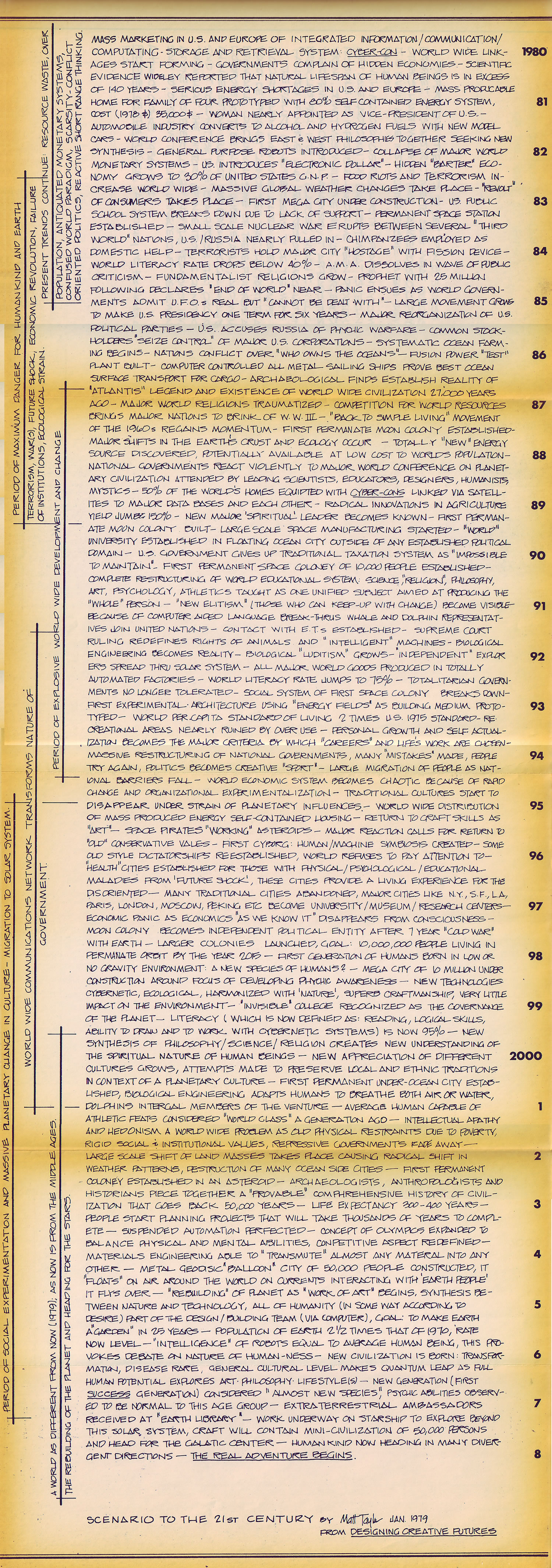The scenario is structured in two parts. The first is the vertical, overlapping lines on the left side which provide a theme and basic description of the six periods of the scenario. The second, the horizontal statements which constitute the specific forecasts (crusp points).
The Mass Production of CyberCon never happened. What did was a “piece” approach. Instead of doing a crude CyberCon and improving it all the components were develop singularly and competitively. All the pieces of CyberCon are on the market now yet no integrated system. The Linkages did start forming leading to the WWW a capability which the CyberCon concept, a great deal of science fiction, and numerous technical papers profiled long in advance no matter the myths associated with its “discovery.”
The Hidden Economies issue did flare up in the early 80s and has since died down. The conservative estimates are that 15 to 40 percent of the U.S. economy is not reported. You would think that this would be an issue today but maybe it is better that it is not. Local and regional economies with their own script may be a good alternative to - and stabilizing influence on - a poorly designed, tightly connected, global system not able to deal with its own complexity. |
